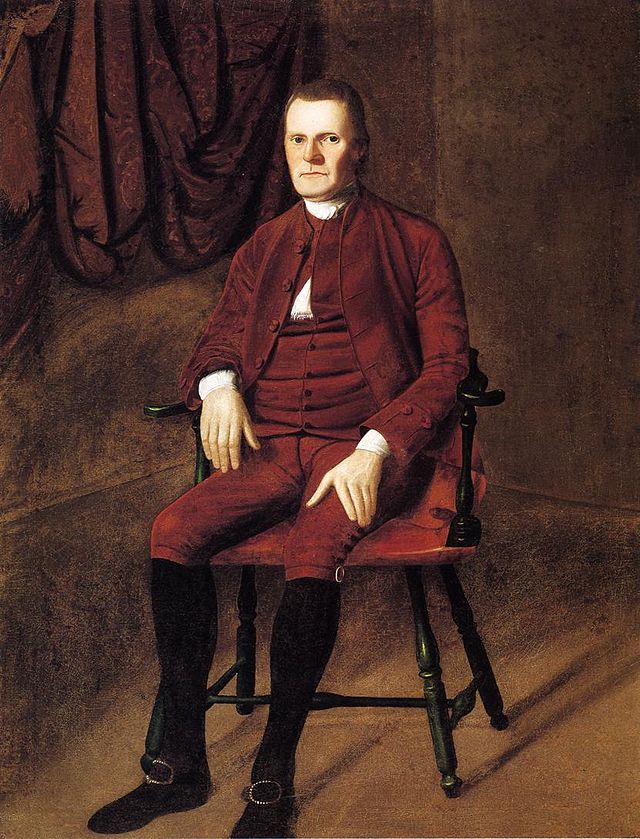On July 23, 1793, Roger Sherman—a Connecticut merchant, lawyer, and statesman—died in New Haven. Roger Sherman moved to Connecticut as a young man and applied himself to a number of vocations, including surveyor, storekeeper, and author of a series of almanacs before becoming a lawyer and public official. Sherman’s public service in Connecticut included holding the offices of clerk, selectman, and justice of the peace. He was also New Haven’s first mayor and served terms as a member of the upper house of the Connecticut Legislature and a judge of Connecticut’s superior court. Sherman was the only signer of all four founding documents of the United States—the Continental Association of 1774, the Declaration of Independence, the Articles of Confederation, and the Constitution. In addition, Sherman played a crucial role at the Continental Congress of 1787 brokering the Great Compromise (also known as the Connecticut Compromise), which established a two-house legislature. Serving two years in the first Federal House of Representatives and two years in the Senate, Sherman continued to work for his country until his death. Roger Sherman died of typhoid fever in 1793 and was buried in the New Haven Green, before the city relocated him to Grove Street Cemetery.
FUNDING CUTS IMPACT CT HUMANITIES: Help CT Humanities navigate recent funding cuts and continue our vital work across Connecticut. All donations made to CTH will be matched dollar-for-dollar up to $50,000. Donate today!

Roger Sherman ca.1775-1776 by Ralph Earl, Yale University Art Gallery, Wikimedia Commons. Used through Public Domain.








